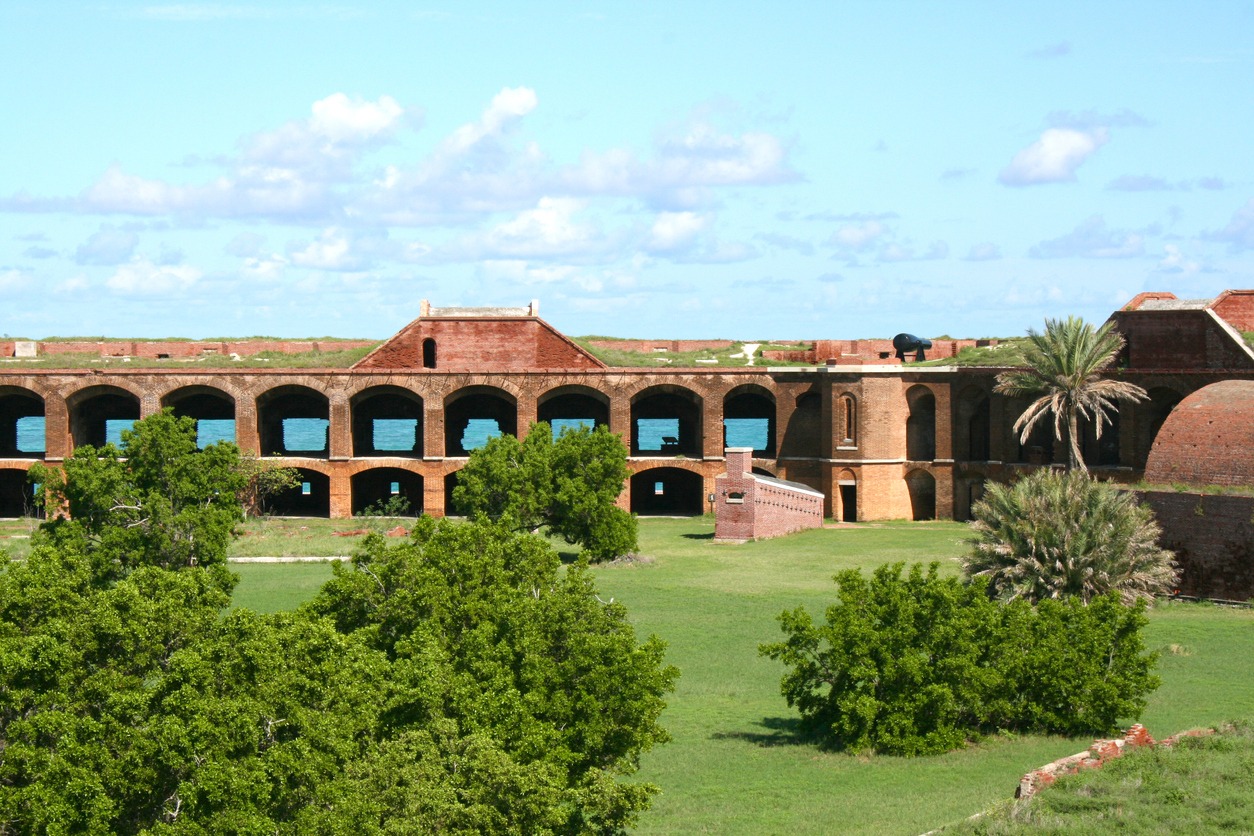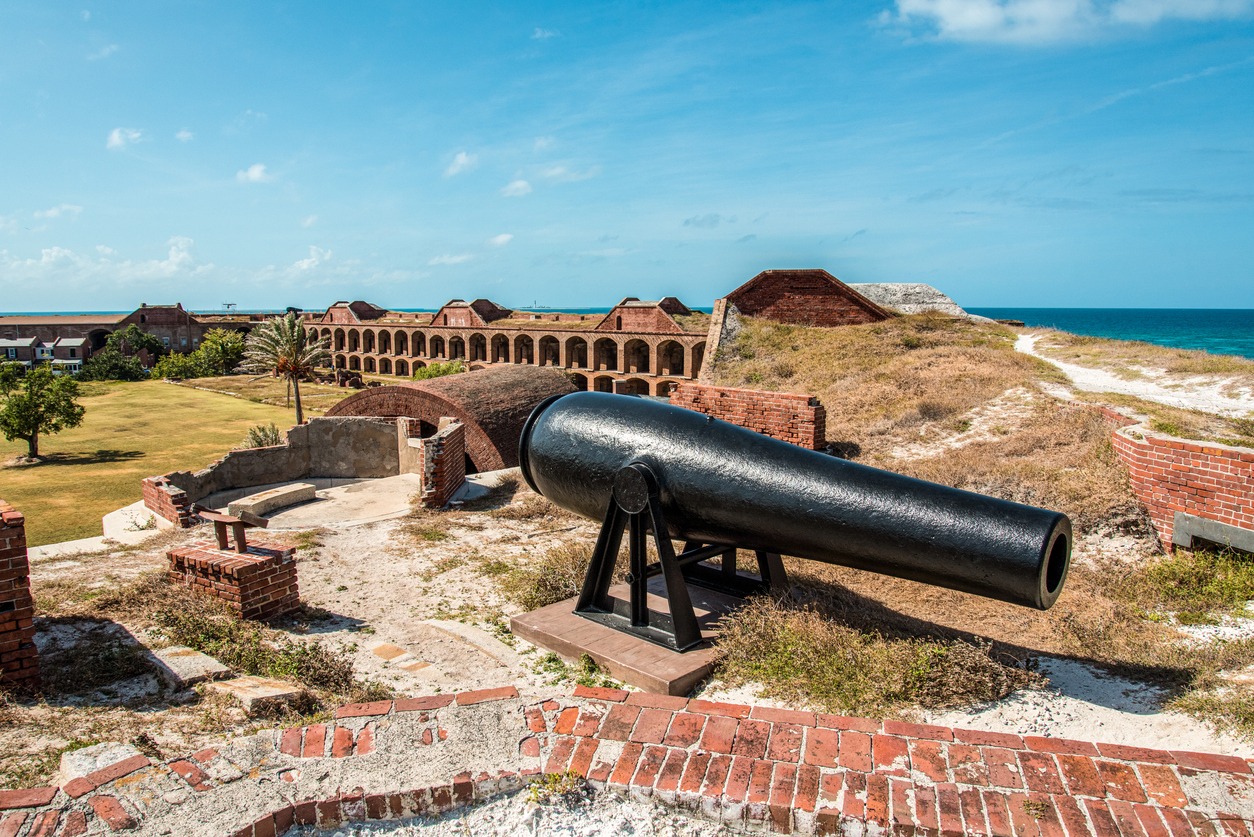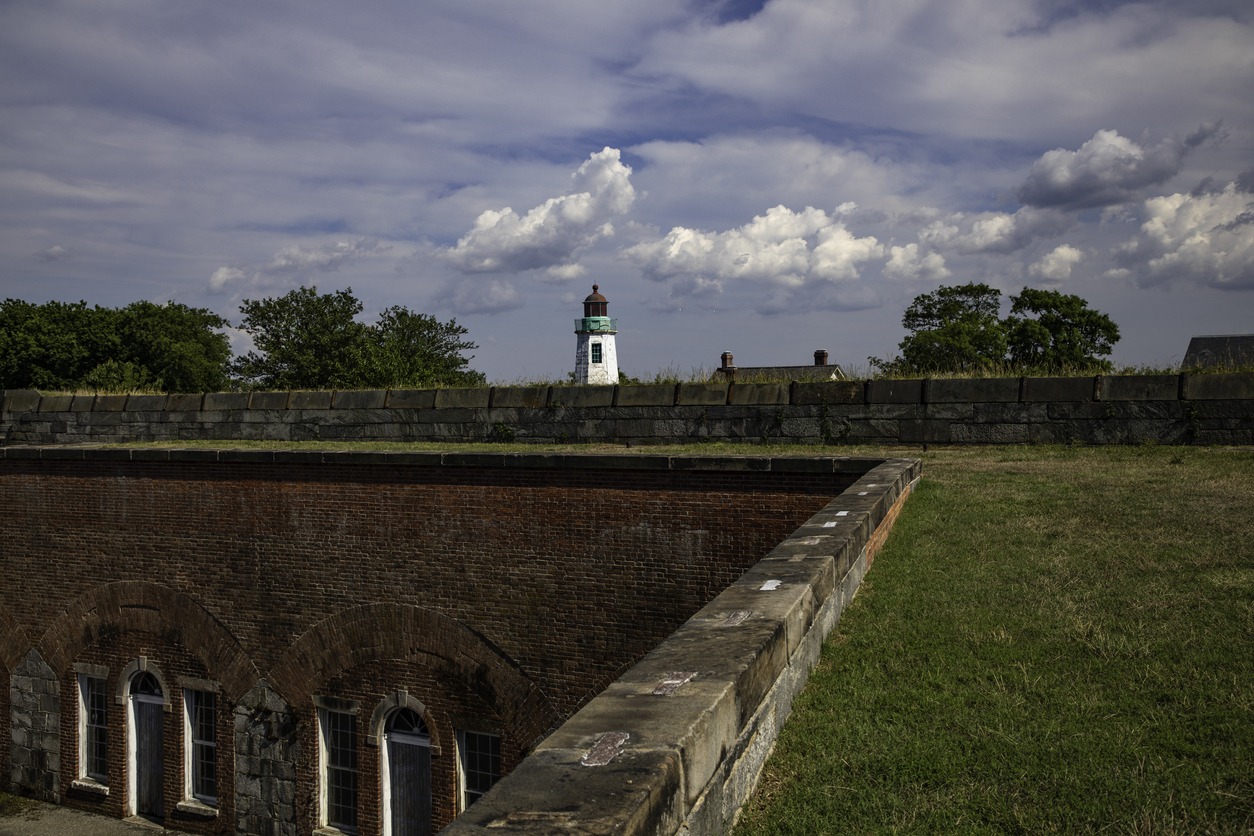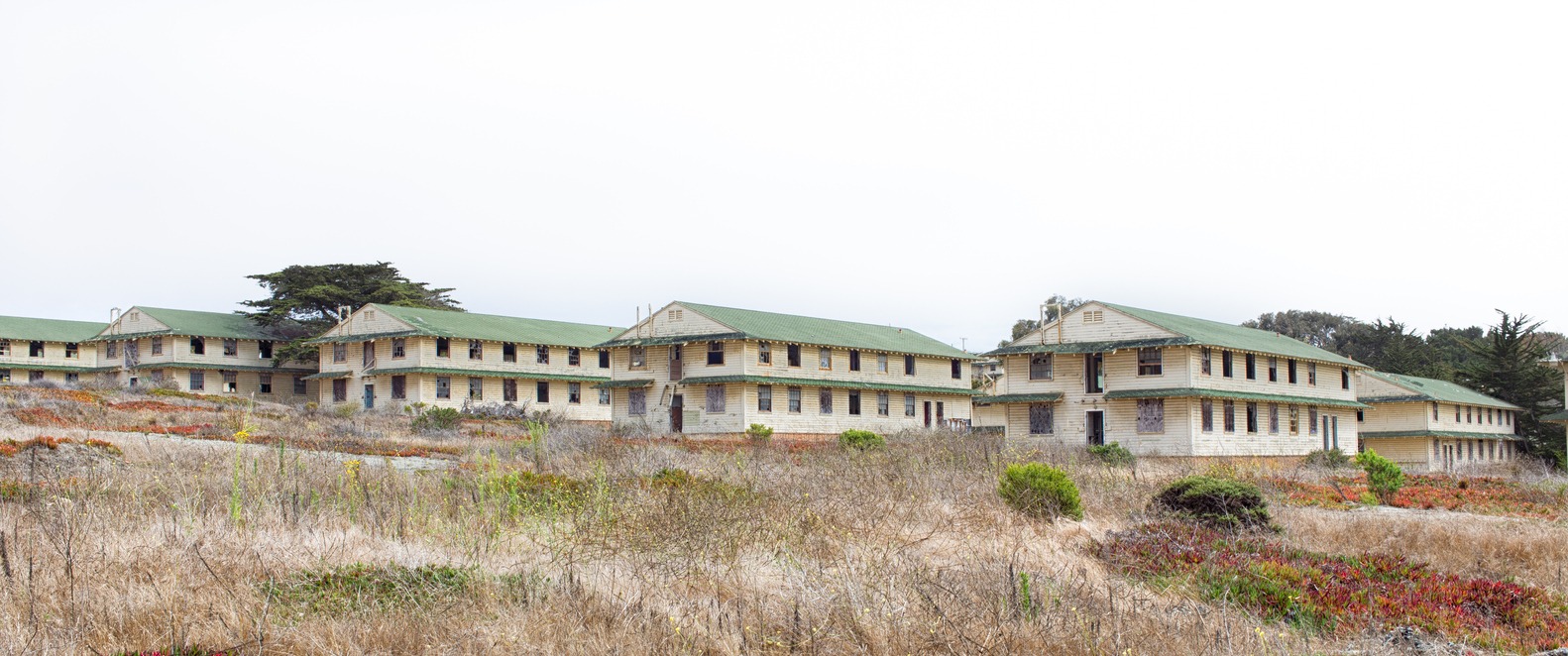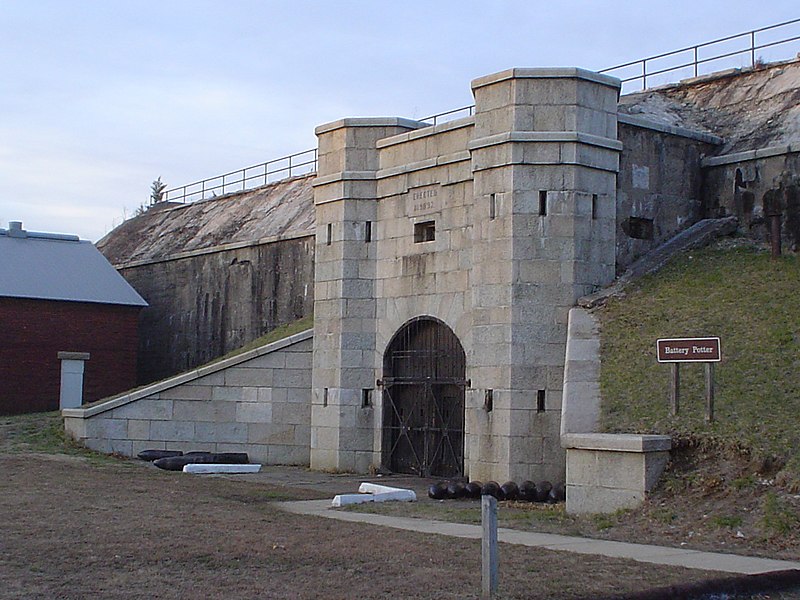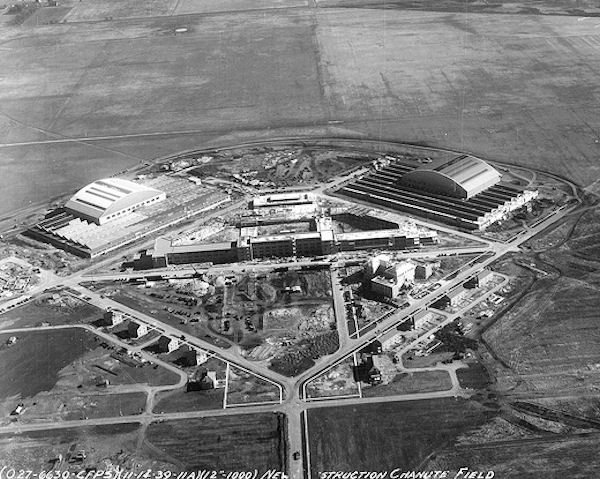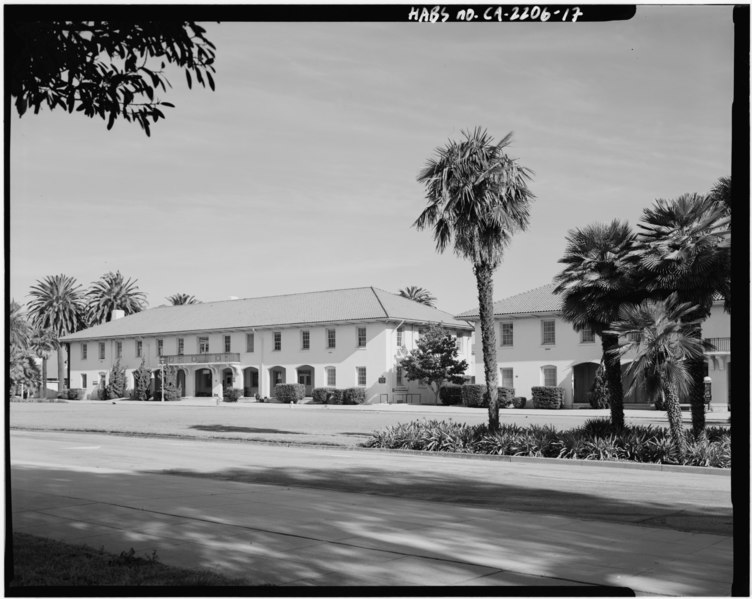In the vast and varied landscape of the United States, hidden away from the bustling city streets and nestled in remote corners, lie the haunting remnants of a once formidable military past. These abandoned military sites, ranging from sprawling forts on desolate coastlines to secretive missile silos buried in rural heartlands, are silent witnesses to the nation’s complex and often turbulent history. They stand as eerie testaments to the changing tides of war, technology, and politics.
Once bustling with activity and purpose, they now rest in quiet desolation, their stories etched in rust and overgrown paths. Exploring these relics offers a unique window into the past, revealing insights into the evolving strategies, technologies, and geopolitical dynamics that have shaped American history. As we venture into these forgotten spaces, we uncover a chapter of the past that continues to echo through the present.
Fort Jefferson, Florida
Fort Jefferson is located in the picturesque Dry Tortugas National Park in Florida. It stands as a monumental relic of 19th-century American military engineering and strategy. This massive coastal fortress is both isolated and imposing, offering a unique glimpse into the nation’s past.
Historical Significance
Constructed beginning in 1846, Fort Jefferson was designed to serve as a deterrent to potential threats at sea, particularly aimed at protecting the Gulf of Mexico’s strategic shipping lanes. Its strategic location on Garden Key allowed it to dominate the shipping passage through the Gulf and the Straits of Florida. The fort is an impressive structure, built with over 16 million bricks, making it one of the largest masonry structures in the Americas.
Present-Day Attraction
Today, Fort Jefferson is an eerily beautiful ghost of its former self, attracting visitors from around the world. Within reach only by boat or seaplane, it offers a unique adventure for those interested in history, architecture, and nature. The fort, now a National Historic Landmark, stands as a poignant reminder of the country’s military past while simultaneously serving as a beacon for ecological preservation and natural beauty.
Nike Missile Site SF-88, California
Nike Missile Site SF-88 stands as a poignant relic of the Cold War era in the United States. It is located in the Marin Headlands just north of San Francisco, California. This site, now a part of the Golden Gate National Recreation Area, offers a rare glimpse into the once-secretive world of military defense during one of the most tension-filled periods of the 20th century.
Historical Context
During the Cold War, the United States faced a new kind of threat: the possibility of aerial attacks from the Soviet Union. In response, the U.S. Army developed the Nike missile project, a nationwide air defense system created to seize and destroy incoming enemy aircraft and missiles. Site SF-88, operational from 1954 to 1974, was one of several such installations spread across the country.
With the de-escalation of the Cold War and advancements in military technology, the need for Nike missile sites diminished. SF-88 was decommissioned in the 1970s, and many such sites across the country were dismantled or repurposed. However, SF-88 has been preserved as a historical site, giving the public a unique opportunity to explore a once top-secret military installation.
Present-Day Significance
Today, SF-88 is the only restored Nike missile site in the United States. It serves not only as a museum but also as an educational center, where visitors can learn about the Cold War and the United States’ early efforts in missile defense. The site includes restored radar vans, a missile assembly building, launch pads, and even restored Nike Hercules missiles (deactivated, of course).
Guided tours, often led by former military personnel with first-hand experience of the site’s operations, provide vivid insights into the realities of the Cold War era. The tours demonstrate the complexities of missile operations, from tracking and targeting enemy aircraft to the hypothetical scenarios of launching a nuclear missile.
Fort Monroe, Virginia
Fort Monroe is also often called the “Freedom’s Fortress,” and it holds a unique place in American history. This star-shaped fortification, located at the tip of the Virginia Peninsula, has been a site of significant military importance from the early 19th century until its decommissioning in 2011.
Historical Significance
Constructed between 1819 and 1834, Fort Monroe is the largest stone fort ever constructed in the United States. Its strategic position at the mouth of the Chesapeake Bay meant it played a pivotal role in several key historical moments, most notably during the Civil War. It remained under Union control throughout the conflict, serving as a crucial stronghold in the South.
Fort Monroe’s most significant contribution to history, however, came in 1861 when it became a symbol of freedom for enslaved people. The fort provided refuge for three enslaved men who had escaped Confederate territory. Major General Benjamin Butler, the fort’s commander, declared these men “contraband of war,” effectively granting them sanctuary. This decision set a precedent, and the fort became a place of refuge for thousands of escaped slaves, earning its moniker “Freedom’s Fortress.”
Fort Monroe Today
Today, Fort Monroe is a public space offering a mix of historical tours, recreational activities, and educational opportunities. Visitors can explore the Casemate Museum, which showcases the fort’s military history, or walk the ramparts where soldiers once stood guard. The site also provides beautiful natural scenery, with beaches and marinas, making it a unique blend of historical and natural attractions.
Fort Ord, California
Fort Ord, located in the picturesque Monterey Bay of California, is a significant yet often overlooked piece of U.S. military history. Established in 1917, it served as a major Army post for most of the 20th century. Covering over 28,000 acres, it was one of the largest army posts in the country.
Military Significance
Throughout its active years, Fort Ord was a crucial training and staging ground for U.S. military personnel. It was particularly active during World War II and the Vietnam War, serving as a major training center for infantry troops. At its peak, the base housed tens of thousands of soldiers, becoming a bustling community with its own unique culture and economy.
In 1994, due to the Base Realignment and Closure (BRAC) program, Fort Ord was officially closed. This closure marked a significant shift in the military landscape of the United States, reflecting broader changes in defense strategy following the Cold War.
Present Day
Today, much of the land that was once Fort Ord has been repurposed for public use. It has become a space for recreation, education, and conservation. A portion of the former base is now home to the California State University, Monterey Bay, and the Fort Ord National Monument, which offers over 80 miles of hiking and biking paths. However, many of the old military buildings and barracks remain abandoned, standing as silent reminders of the base’s active past.
Fort Hancock at Sandy Hook, New Jersey
Fort Hancock, situated at the northern tip of Sandy Hook in New Jersey, is a historic former military installation with a rich history dating back to the late 19th century. This coastal fortification, part of the Gateway National Recreation Area, played a crucial role in the coastal defenses of the United States, particularly during World Wars I and II.
Historical Significance
Fort Hancock was established in 1895 as part of a strategic effort to fortify major harbors of the United States. It was equipped with heavy artillery to protect New York Harbor and was an active military base until it was decommissioned in 1974. During its peak years, particularly during the World Wars, Fort Hancock was a bustling community with numerous military personnel and their families.
Present-Day Attraction
Today, Fort Hancock is a fascinating site for visitors, offering a blend of historical, cultural, and natural experiences. While some of the buildings and batteries have been restored, others remain in a state of decay, serving as poignant reminders of the area’s military past. The fort’s scenic location on the Sandy Hook Peninsula also makes it a popular spot for outdoor activities, such as fishing, biking, and bird-watching.
Chanute Air Force Base, Illinois
Chanute Air Force Base, situated in Rantoul, Illinois, holds a significant place in the history of U.S. military aviation. Established in 1917, named in honor of aviation pioneer Octave Chanute, the base played a critical role as a training facility for the United States Air Force until its closure in 1993.
Historical Significance
Throughout its operational years, Chanute Air Force Base was renowned for its technical training programs. It served as a primary center for training thousands of airmen in various technical specialties, including aircraft maintenance, missile maintenance, and survival training. The base was pivotal during World War II, the Korean War, and the Vietnam War, adapting to the developing needs of the U.S. Air Force.
The closure of Chanute Air Force Base was part of a broader realignment and closure of military installations across the country. Its shutdown marked the end of a significant era in the history of military aviation training. Following its closure, many of the base’s buildings and facilities were left abandoned, while others found new purposes.
Current State
Today, the former Chanute Air Force Base has been partially repurposed for civilian use. Part of the base now hosts the Octave Chanute Aerospace Museum, which is dedicated to preserving the history of the base and its contributions to aviation. Other areas have been converted for commercial and residential use. However, some sections of the base remain unused, standing as silent reminders of its past military significance.
Fort MacArthur, California
Fort MacArthur, located in San Pedro, California, is a historic military site that played a significant role in the coastal defense of the United States, particularly during the World Wars. Established in the early 20th century, the fort was named after Lieutenant General Arthur MacArthur, a notable figure in American military history.
Historical Significance
The primary purpose of Fort MacArthur was to defend the Los Angeles harbor from potential naval attacks. Its strategic location near the Pacific Ocean made it an essential part of the coastal defense system. The fort was equipped with powerful artillery guns capable of firing at long-range targets at sea.
During World Wars I and II, Fort MacArthur served as a critical defense point for the West Coast. The fort’s guns and searchlights were on constant alert for enemy ships and aircraft. In addition to its defensive role, the fort also served as a training and induction center for soldiers heading to the Pacific theater.
Current Status
After World War II, with the advent of long-range missiles and changes in military strategy, the role of traditional coastal fortifications like Fort MacArthur diminished. The fort was eventually decommissioned in the 1970s. Today, parts of the historic site have been preserved and repurposed for public use.
Conclusion
The abandoned military sites scattered across the United States are more than just relics of a bygone era, as they are profound symbols of the country’s evolving history and defense strategies. Each site tells a unique story of a time when they were pivotal in the nation’s military operations. These places, now silent and often reclaimed by nature, offer reminders of the complexities of war, the advancements in military technology, and the changing geopolitical landscapes.

